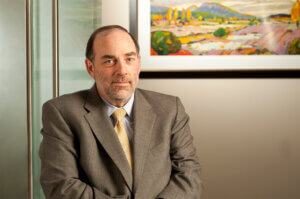
By Andy Levy
On the next to last day of its 2019 Term, a sharply divided Court of Appeals expressly adopted the Daubert standard for the evaluation of scientific expert testimony in Maryland courts, turning its back on over four decades of jurisprudence known as the Frye-Reed test. See Rochkind v. Stevenson, ___ Md. ___ (8-28-20), overruling Reed v. State, 283 Md. 374, 391 A.2d 364 (1978). The Court had been urged to take this step for years, both by the academic literature, see Nancy E. Bonifant, “Blackwell v. Wyeth: It’s Our Courtroom and We’ll Frye (Only) If We Want to—the Maryland Court of Appeals’s Unstated Adoption of Daubert,” 69 Md. L. Rev. 719, 719–720 (2010), and by members of the Court itself, see Savage v. State, 455 Md. 138, 174 (2017) (Adkins, J., concurring, joined by Barbera, C.J., and McDonald, J.). It was also widely predicted. See, e.g., Levy & Hornstein, Maryland Courtroom Evidence Manual (2020) at 269-270 (“The Frye-Reed Test: Are Its Days Numbered?”).
In Rochkind, the Court of Appeals voted 4-3 to abandon the Frye-Reed test’s sole and dispositive reliance on general acceptance in the relevant scientific community, replacing it with nearly a dozen factors harvested from Daubert and its extensive progeny. After Rochkind, it is now the law in Maryland that a court considering whether to admit expert scientific opinion should consider factors including, but expressly not limited to:
- whether a theory or technique can be (and has been) tested;
- whether a theory or technique has been subjected to peer review and publication;
- whether a particular scientific technique has a known or potential rate of error;
- the existence and maintenance of standards and controls;
- whether a theory or technique is generally accepted;
- whether experts are proposing to testify about matters growing naturally and directly out of research they have conducted independent of the litigation, or whether they have developed their opinions expressly for purposes of testifying;
- whether the expert has unjustifiably extrapolated from an accepted premise to an unfounded conclusion;
- whether the expert has adequately accounted for obvious alternative explanations;
- whether the expert is being as careful as he or she would be in his or her regular professional work outside his or her paid litigation consulting; and
- whether the field of expertise claimed by the expert is known to reach reliable results for the type of opinion the expert would give.
Rochkind v. Stevenson, ___ Md. ___ (8-28-20). Judge Getty wrote the opinion for the Court, joined by Judge McDonald and the Court’s two newest members, Judges Booth and Biran. Judge Watts wrote adissernting opinion, joined by Judges Hotten and Greene. Judge Greene sat in place of Chief Judge Barbera, but it is unlikely this affected anything but the final tally, since Chief Judge Barbera had joined Judge Adkins’ concurrence in Savage and almost certainly would have voted to join Judge Getty’s opinion.
The extent to which the adoption of the Daubert standard will change the result in many cases is questionable in view of the fact that “[i]n the forty years that followed Reed, Maryland experienced a jurisprudential drift: the Frye–Reed standard announced in 1978 slowly morphed into a “Frye–Reed standard, implicitly and explicitly relying on and adopting several Daubert principles.” Rochkind v. Stevenson, ___ Md. ___, Slip. Op. at 1 (8-28-20). Nonetheless, in light of Maryland’s reliance on the Frye-Reed test over many years in dozens (if not hundreds) of published opinions, trial courts and advocates would be wise to exercise caution before relying on existing case law in this oft-litigated area. No doubt, the Court of Appeals will be kept busy in future years conforming the considerable body of existing case law to the new Daubert regime.
